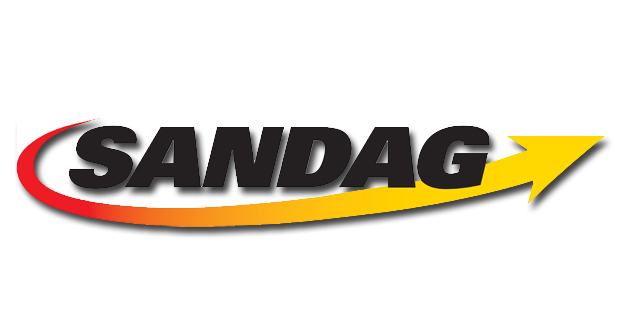California’s Transit and Intercity Rail Capital Program Will Fund Needed Rail Upgrades in the San Diego Region
San Diego CA— On Tuesday, April 21, the San Diego region received approximately $40 million from the Transit and Intercity Rail Capital Program (TIRCP) administered by the California State Transportation Agency. TIRCP provides grants from the Greenhouse Gas Reduction Fund and Senate Bill 1 to fund transformative capital improvements that will modernize the state’s intercity, commuter, and urban rail systems, and bus transit systems.
Of the awarded $40 million, $5 million will be dedicated to the Del Mar Bluffs Stabilization project. The funds will support the project’s efforts to upgrade a 1.7-mile segment of the LOSSAN Rail Corridor in Del Mar to ensure the tracks meet current design and safety standards for seismic and slope stability.
“The Del Mar stretch of the rail corridor has been in place since 1912 serving our region and the state,” said SANDAG Chairman and Poway Mayor Steve Vaus. “This rail corridor is a critical corridor for defense, goods movement, and passenger travel. Now is the time to repair and upgrade this portion of the bluffs to ensure continued safety, and frequent and reliable service for all sectors of our economy until the region can study and move the tracks inland permanently.”
As the project enters construction on its fourth phase this month, efforts will focus on activities that maintain a stable and secured track bed along the coastal bluffs and protect the railroad from possible erosion and seismic events.
“The LOSSAN tracks within San Diego support the movement of goods and people and is part of the nation’s Strategic Rail Corridor Network. A critical failure of the Del Mar Bluffs would have significant impacts on our economy, environment, and military readiness,” said Tony Kranz, NCTD Board Chair and Encinitas Councilmember. “The $5 million in funding from the TIRCP Program is a step forward in funding the $100 million that is needed to complete bluff stabilization projects. NCTD appreciates the key stakeholders who continue to support the efforts to secure the bluffs so the trains can keep moving.”
MTS was awarded $7.1 million for the El Cajon Third Track project, which would construct an additional Trolley track and platform at the El Cajon Transit Center. The project is designed to relieve operational constraints that are currently impacting the entire line, while continuing to provide service between El Cajon and Santee.
“This investment into our Trolley system will improve the on-time-performance of all three MTS Trolley lines, which will greatly improve reliability and increase ridership,” said Nathan Fletcher, County Supervisor and chair of the MTS Board of Directors. “A third track at the El Cajon Transit Center provides the system with greater operation flexibility and efficiency.”
Additionally, the LOSSAN Corridor Agency was awarded design and construction funding for a new maintenance facility in National City to enable longer trains and better departure times, contributing to both frequency and ridership growth for the Amtrak Pacific Surfliner. The facility will allow storage and maintenance of additional and longer trains (up to -car trains, or equivalent), increasing the efficiency and ridership of services into San Diego. It also will move primary maintenance activities away from the Santa Fe Depot in San Diego, which is primarily surrounded by residential and commercial land uses.
These projects are part of a coordinated multi-agency effort to implement key improvements that build upon the $3.2 billion investment that our agencies, in cooperation with state and federal funding partners, are making in both the LOSSAN and San Diego Trolley rail corridors.
About SANDAG
The San Diego Association of Governments (SANDAG) is the San Diego region’s primary public planning, transportation, and research agency, providing the public forum for regional policy decisions about growth, transportation planning and construction, environmental management, housing, open space, energy, public safety, and binational topics. SANDAG is governed by a Board of Directors composed of mayors, council members, and supervisors from each of the region’s 18 cities and the county government.
To protect the health and safety of staff, partners, and the general public, SANDAG offices are closed to the public. Our team is working remotely during this time to provide essential services, and to continue progress on critical regional projects. SANDAG will continue to monitor the development of COVID-19 in the region and follow guidance from the San Diego County Health and Human Services Agency.
- FACEBOOK: SANDAGregion
- TWITTER: SANDAG
- YOUTUBE: SANDAGregion
- INSTAGRAM: SANDAGregion




